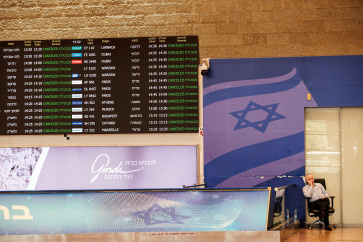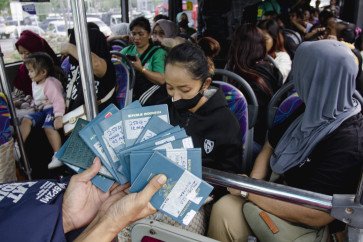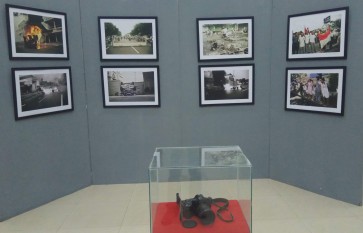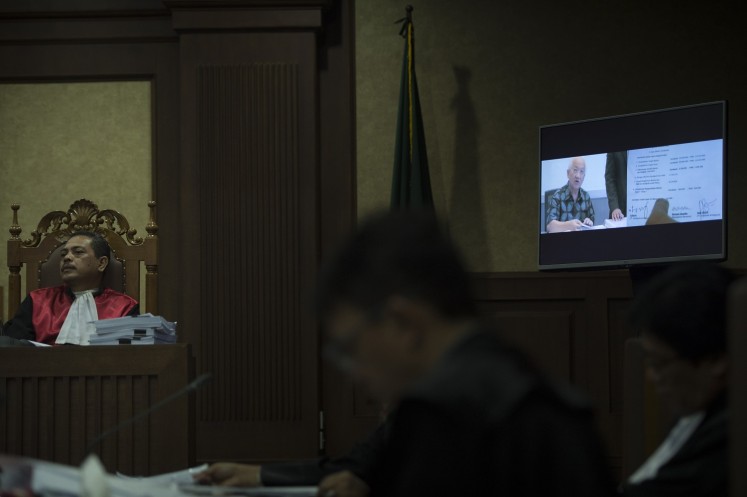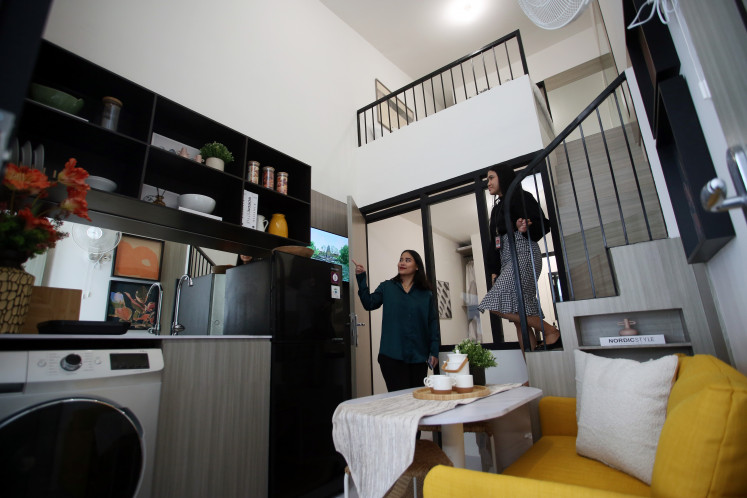Popular Reads
Top Results
Can't find what you're looking for?
View all search resultsPopular Reads
Top Results
Can't find what you're looking for?
View all search resultsDjongko Rahardjo: Batik for Miss Universe Beauties
Ganug Nugroho AdiSolo-based fashion designer Djongko Rahardjo never thought his creations would one day end up complementing the perfect silhouettes of Miss Universe beauties
Change text size
Gift Premium Articles
to Anyone

G
a href="http://">Ganug Nugroho AdiSolo-based fashion designer Djongko Rahardjo never thought his creations would one day end up complementing the perfect silhouettes of Miss Universe beauties.
At least four of them have worn his batik evening gowns in recent years: Riyo Mori (2007), Dayana Mendoza (2008), Stefania Fernandez (2009) and Ximena Navarrete (2010).
He has also designed dresses for Putri Indonesia titleholders running for Miss Universe since 2005.
“I feel honored. I never dreamed a regional designer would be entrusted with handling such a big task,” said Djongko at his Central Java home of Solo, also known as Surakarta.
Djongko had good reasons to be surprised since Jakarta has always been considered the country’s Mecca for fashion, forcing many young designers to move to the capital to pursue their career.
“I chose to stay in Solo because it’s where batik is from, which I use as a material for my designs, so why move to Jakarta?” he remarked.
According to Djongko, it was his batik dress designs that got him selected as one of the designers for Miss Universe attires. Djongko often travels between Surakarta and Jakarta to watch other people’s fashion shows as well as present his own batik creations.
After seeing Djongko’s garments in a contest, a national cosmetic company asked him to send specimens of batik evening gowns for Putri Indonesia.
“I delivered what they wanted and they liked my designs. In 2005, I started outfitting Putri Indonesia. Two years later they entrusted me with designing the Miss Universe gowns,” said Djongko.
He is known for using batik especially when creating evening gowns. Many designers describe his works as feminine and elegant.
“I create very feminine evening wear,” he added.
Although he lives in Surakarta, Djongko is always on top of fashion developments, which he follows on the Internet, in magazines, and by exchanging thoughts with his peers and networks. He frequently attends fashion events in Jakarta, Bandung, Yogyakarta and Bali.
"Regional designers should maintain a particular style to make sure they are recognized instantly. Only in this way will our creations be accepted,” assured Djongko.
His love of batik grew along with his career.
Not formally trained in the art of designing, Djongko believes he inherited his talent from his mother, Setyowati (78), who used to be a seamstress. His father, Boediono Linggo Rahardjo (82), a retired employee from a cigarette company, has always been supportive of his chosen profession.
“As a child, I liked watching my mother sew. Once I drew patterns on a piece of material to be sewn and cut it, which made her very angry,” recalled Djongko.
Djongko is also fond of painting. He participated in several exhibitions as a member of Sanggar Bambu, a painting group in Surakarta.
In junior high school he became familiar with batik particularly as a member of Suryo Sumirat, a dance troupe in Mangkunegaran Court. This group not only taught classical dances but also introduced various dancing accessories including batik costumes.
“I was very close to Gusti Heru [GPH Herwasto Kusumo, younger brother of Mangkunegoro IX] and court servants. From Gusti Heru I learned batik motif making and the servants taught me nyanting [batik hand painting],” said the 42-year-old man.
Thanks to his connection to Mangkunegaran circles, he soon became inseparable from anything batik related.
His design career started when made it as a finalist in a design contest organized by Femina Magazine in 1986.
“I’ve had a few surprises in my life, from winning a designer competition to creating batik gowns for Miss Universe queens,” said Djongko, who studied at the School of Agriculture, Slamet Riyadi University, Surakarta.
Apart from his designing, Djongko also actively campaigns for batik clothes, through the event Solo Batik Fashion (SBF) for example, held in the city each year.
“We want to get rid of this image of batik as formal wear for elderly people. For designers, unlike imported textile, batik is actually an endless source of inspiration.”
Yet in Djongko’s view, designing batik-based quality clothing is quite a challenge as batik producers and designers have different tastes when it comes to fabrics.
“Producers prioritize motifs and colors the market demands, while designers are more oriented toward art fashion,” said the soft-spoken man.
To promote batik-based fashion overseas, producers and designers should be open to each other’s ideas to create synergies, Djongko went on. Producers should be ready to try new patterns and colors depending on prevailing fashion trends and designers should be more creative in their exploration of batik.
“For instance, fashion in Europe and America has four seasons, each with its own color trend.
Batik could penetrate the world market if we could present motifs and designs that matched global taste,” said Djongko, who once studied fashion show stage direction and management in Hong Kong.

